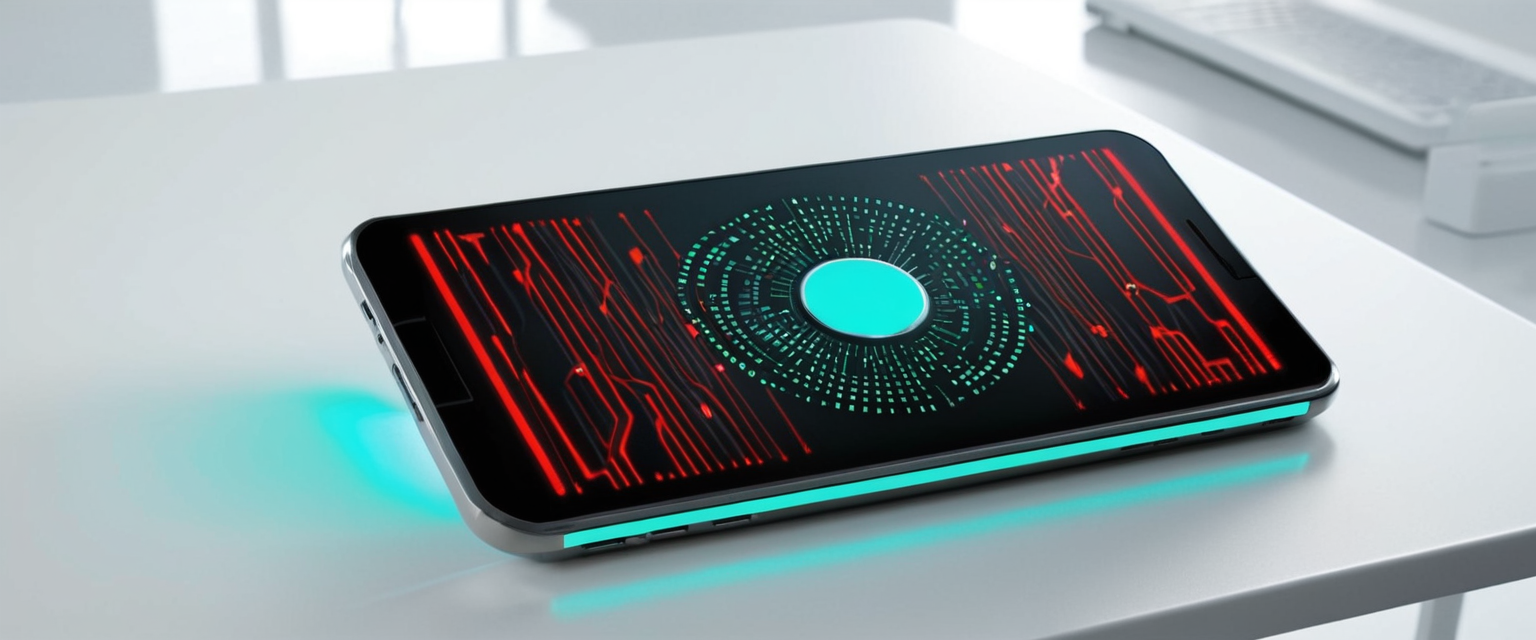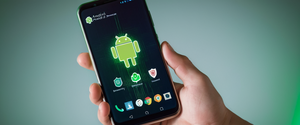
While iPhones are widely regarded as among the most secure consumer devices available, the straightforward answer to whether they can get malware is nuanced and revealing. iPhones can indeed get malware, though true viruses are exceptionally rare due to iOS’s architectural design. However, the incidence of actual malware infections remains extraordinarily low compared to other platforms, with threats typically targeting specific high-value individuals rather than the broader user base. Understanding the distinction between true viruses and other malicious software, recognizing the security mechanisms that protect iPhones, and knowing the specific vulnerabilities that can be exploited is essential for any user concerned about device security. This comprehensive analysis examines the current state of iPhone malware threats, the sophisticated architecture that provides protection, the specific attack vectors that succeed despite Apple’s defenses, and the practical steps users can take to identify and remediate infections should they occur.
iOS Security Architecture and the Foundation of iPhone Protection
Apple has engineered the iOS platform with multiple layers of security designed from the ground up to prevent malware infection and limit the damage any compromised software can cause. The fundamental principle underlying iOS security is the concept of sandboxing, a digital isolation mechanism that fundamentally differs from how traditional computer viruses operate. Every application running on an iPhone operates within its own isolated virtual space, completely separated from other applications and the core operating system files. This architectural decision makes traditional self-replicating viruses nearly impossible, as applications cannot propagate to other applications or modify other installed software. The sandbox prevents any app from accessing files stored by other apps, from making changes to the device system, or from interfering with core iOS functionality without explicit user permission.
Beyond sandboxing, Apple has implemented the Secure Enclave, a dedicated secure subsystem integrated into every modern iPhone’s processor that provides an additional layer of protection for sensitive data and authentication. The Secure Enclave operates as an isolated processor within the main CPU, maintaining its own operating system and security protocols entirely separate from the main device. This hardware feature protects biometric data used for Face ID and Touch ID, stores encryption keys for data protection, and processes the most sensitive security operations in a way that remains inaccessible even if the main operating system becomes compromised. The Secure Enclave uses its own boot ROM to establish a hardware root of trust, an isolated AES engine for cryptographic operations, and protected memory that maintains separation from the application processor. All data is encrypted in memory and decrypted only while being used inside this secure processor, ensuring comprehensive protection even in sophisticated attack scenarios.
Apple’s App Store review process represents another critical security layer that distinguishes iOS from more open platforms. Every application submitted to the App Store undergoes rigorous automated scanning for known malware, manual human review by security experts, and careful examination to ensure the app accurately represents its functionality and doesn’t unnecessarily request access to sensitive data. In 2024 alone, Apple prevented more than $2 billion in fraudulent transactions across its App Store, blocked nearly 2 million risky app submissions from being published, terminated more than 146,000 developer accounts over fraud concerns, and rejected an additional 139,000 developer enrollments from bad actors. This comprehensive vetting process creates a significant barrier against widespread malware distribution compared to platforms with less stringent app review.
Additionally, Apple implements Address Space Layout Randomization (ASLR), a technique that randomizes memory addresses at runtime to make it substantially harder for attackers to exploit memory corruption vulnerabilities. The Execute Never feature marks memory pages as non-executable to prevent certain attack techniques, while Lockdown Mode provides extreme security hardening for users facing nation-state level threats. iOS also features automatic security patching through rapid security response mechanisms that allow critical fixes to be deployed without full system updates, enabling faster response to newly discovered vulnerabilities.
Types of Malware That Can Affect iPhones
While traditional viruses struggle to function on iOS due to sandboxing, other forms of malicious software can successfully compromise iPhones when certain conditions are met. The distinction between different malware types is crucial for understanding what threats actually pose a realistic danger to iPhone users. Spyware represents perhaps the most serious threat, as it operates covertly to monitor user activities, track location, intercept communications, and steal sensitive data including passwords and banking information. Unlike adware that generates revenue through unwanted advertisements, spyware’s purpose is surveillance and data theft, making it particularly dangerous for activists, journalists, and political dissidents who may face targeted attacks from state-sponsored actors.
Trojan horses disguise themselves as legitimate applications but secretly perform malicious actions once installed, including stealing authentication credentials, accessing the microphone and camera, enabling remote control of the device, or deploying additional malware. Adware functions by displaying constant pop-up advertisements, collecting personal browsing data, and redirecting users to potentially malicious websites, generating revenue for its creators through sponsored content. While adware is primarily annoying rather than immediately dangerous, it can facilitate data collection and create entry points for more serious attacks. Ransomware, though less common on iOS than on other platforms, can encrypt files or lock users out of their devices while demanding payment for restoration.
Keyloggers, a particularly insidious form of malware, operate silently in the background recording every keystroke users make, capturing passwords, credit card numbers, personal messages, and sensitive information without any visible indication of surveillance. Some keyloggers on iOS come in the form of malicious custom keyboards that mimic Apple’s default keyboard, while others operate as broader spyware applications. Configuration profile malware represents another attack vector, where users are tricked into installing profiles that grant malicious actors deep system access, effectively jailbreaking the device in a way that leaves it vulnerable to comprehensive compromise.
Attack Vectors: How Malware Reaches iPhones
Understanding how malware successfully reaches iPhones despite the security architecture is essential for recognizing and avoiding infection. The most common successful attack vector is phishing, where users are tricked through deceptive emails, text messages, or app notifications into revealing sensitive information or installing malicious content. Phishing attacks exploit human psychology rather than technical vulnerabilities, using urgency, threats, and appeals to authority to manipulate users into bypassing their own security judgment. Text message phishing, known as smishing, has become particularly effective, with attackers impersonating banks, delivery services, and government agencies to trick users into clicking malicious links or providing personal information. Recent phishing campaigns have specifically exploited iMessage’s built-in protection against unknown senders by asking users to reply “Y” or “STOP” to verify messages, which inadvertently enables previously disabled links and confirms to attackers that they’ve reached active phone numbers.
Zero-day exploits represent a particularly dangerous attack vector, as they target previously unknown vulnerabilities in iOS that Apple has not yet discovered or patched. Since the software maker has “zero days” to fix the problem before exploitation occurs, zero-day vulnerabilities can be weaponized in the wild before any defensive measures exist. The FORCEDENTRY exploit, for example, used zero-day vulnerabilities in iOS’s PDF processing to deliver the Pegasus spyware through iMessage without any user interaction required. This type of zero-click exploit is particularly terrifying because it requires no user action—simply receiving the malicious message can result in device compromise. Recent zero-day discoveries in 2025, including CVE-2025-43300 in the ImageIO framework that processes images, demonstrate that such vulnerabilities continue to emerge, requiring constant vigilance from Apple’s security team.
Malicious apps can occasionally slip through the App Store review process, though such incidents are rare. In 2024, Apple removed approximately 82,509 apps from the App Store, with many removed due to violations of safety, performance, business, design, and legal guidelines. Fraudulent apps that mimic legitimate software—such as the fake “LassPass” app impersonating LastPass or fraudulent cryptocurrency apps mimicking legitimate financial services—have successfully deceived users and stolen credentials and funds despite Apple’s review process. Outside the official App Store, the new European Union sideloading capability introduced by the Digital Markets Act creates additional risk, as apps obtained from alternative sources lack the same level of vetting and security scrutiny.
Configuration profile installation remains a surprisingly effective attack vector, as users can be socially engineered into installing profiles that grant extensive system access. When a user installs a configuration profile—ostensibly for legitimate purposes like enterprise app deployment or beta testing—they are essentially jailbreaking their device in a controlled manner that provides attackers with profound system access without the obvious technical modifications that full jailbreaking would require.

Jailbreaking as the Critical Vulnerability Gateway
Jailbreaking represents the single most significant factor that transforms iPhones from resistant targets into vulnerable devices open to malware infection. Jailbreaking involves removing Apple’s security restrictions by obtaining root privileges that bypass the operating system’s built-in protections, allowing applications to access restricted system areas, modify other apps, and operate without the limitations of sandboxing. While jailbreaking provides users with greater customization options—including the ability to modify how the system looks, delete pre-installed applications, install custom keyboards and themes, and download apps from sources other than the App Store—it simultaneously removes the primary protection mechanism that prevents malware from propagating and gaining system-wide access.
The security risks of jailbreaking are profound and multifaceted. Jailbroken devices can no longer receive iOS security updates, as most iOS updates overwrite the jailbreak, forcing users to remain on outdated, vulnerable versions of the operating system. This means that newly discovered vulnerabilities and security patches released by Apple remain uninstalled on jailbroken devices, providing attackers with a persistent window of opportunity. Malware on jailbroken devices can achieve root access, granting complete control over the system and enabling unrestricted permission to add applications, modify system settings, steal any data on the device, and hide from detection mechanisms. Notable iOS malware has specifically required jailbroken devices to function; the iOS/AdThief malware that hijacked advertising revenues from app developers, for instance, operated exclusively on jailbroken devices where it could inject code into legitimate applications.
Jailbroken iPhones frequently suffer from performance degradation, including sluggish operation, application crashes, battery drain, overheating, and device instability. Users who jailbreak their devices also void their Apple warranty, losing access to official support and repair services. Purchasing a second-hand iPhone that has been jailbroken transfers these risks to the new owner, which is why examining a used device for jailbreak apps—most notably Cydia or Sileo—is essential before purchase.
Notable Cases: Pegasus and Other Documented iPhone Malware
Pegasus spyware stands as perhaps the most infamous and consequential iPhone malware case, demonstrating the sophisticated capabilities that state-sponsored malware can achieve despite iOS’s robust security. Developed by the Israeli cyber-arms company NSO Group and marketed as a tool for fighting terrorism and crime, Pegasus has been repeatedly documented surveilling journalists, human rights activists, political dissidents, and government officials across multiple countries. The spyware is capable of reading text messages, monitoring call records, collecting passwords, tracking location in real-time, accessing the target device’s microphone and camera, harvesting information from installed applications, and exfiltrating data covertly.
Pegasus initially exploited zero-day vulnerabilities in iOS through the FORCEDENTRY exploit, which used PDF files disguised as GIF files to inject malicious code through iMessage. The sophistication of FORCEDENTRY was extraordinary, utilizing over 70,000 JBIG2 segment commands to define logical bit operations that constructed a complete virtual computer architecture within the image decompression process, effectively bootstrapping a sandbox escape entirely within image processing code. Even after Apple patched the initial FORCEDENTRY vulnerability, Pegasus continued evolving, and as of September 2023, operators remained able to remotely install the spyware on iOS versions through 16.6 using zero-click exploits. Apple’s response included filing a lawsuit against NSO Group in November 2021, seeking permanent injunction and damages for targeting Apple users.
AdThief represents a different category of iPhone malware—one aimed at financial gain rather than surveillance. Discovered in March 2014 by researcher Claud Xiao, AdThief operated exclusively on jailbroken iPhones, where it hijacked advertising revenues by modifying developer IDs in ad networks to redirect payments to attacker-controlled accounts. The malware infected an estimated 75,000 devices and stole revenue from approximately 22 million advertisements across multiple ad networks including InMobi and UMeng.
Recent malware discoveries in 2024-2025 include fraudulent apps that successfully bypassed App Store review, including fake cryptocurrency applications and phishing apps designed to steal credentials. The discovery of fake LastPass and cryptocurrency apps in early 2024 demonstrated that despite comprehensive review processes, malicious apps occasionally reach the store. Stealer malware has emerged as a growing threat in 2024-2025, with malware specifically designed to exfiltrate authentication cookies, passwords, and session data from browsers and applications. These stealer programs operate through various mechanisms including malicious configuration profiles, compromised apps, and phishing attacks, and represent a growing trend expected to continue throughout 2025.
Detection and Identification of iPhone Malware
Identifying malware on an iPhone is complicated by the fact that iOS sandboxing and application isolation limits what malware can obviously signal about its presence. Traditional antivirus scanning, which works effectively on desktop computers, has severe limitations on iOS because apps cannot scan outside their own sandboxed area—meaning third-party antivirus applications on iOS cannot comprehensively scan the system for threats. Nevertheless, certain warning signs warrant investigation and concern. Sudden battery drain that cannot be explained by increased usage patterns may indicate malware running background processes, though this can also result from battery degradation or misconfigured applications. Unexpected data usage spikes that don’t correspond to intentional downloads or streaming may suggest malware transmitting data to attacker servers, though this should be verified through Settings > Mobile Data to check which applications are consuming data.
Constant pop-up advertisements, especially those appearing outside of normal web browsing, may indicate adware infection, though this is more commonly associated with jailbroken devices. Device overheating when idle or during light use may suggest malicious background processes consuming processor resources, though this can also indicate hardware failure or battery issues. Mysterious applications appearing in the app library that the user does not remember installing warrant immediate investigation and removal. Application crashes that occur consistently with no clear cause may indicate malware interference, though this more commonly results from software bugs, incompatibility, or insufficient memory. Unexpected charges appearing on Apple ID, iTunes, or credit card statements may indicate malware hijacking in-app purchases or premium services, requiring immediate investigation of recent transactions.
For users concerned about comprehensive threats like spyware, the reality is sobering: detecting advanced spyware like Pegasus on an iPhone is extraordinarily difficult without forensic analysis. Sophisticated spyware is specifically designed to hide and avoid detection, operating silently without the obvious symptoms that characterize less advanced malware. There is no practical way for typical users to scan for such threats on non-jailbroken devices, and no reliable app exists that can perform this function given iOS’s security constraints. Manual examination of installed applications, permissions granted to each app, recent location history, notification activity, and data usage patterns provides limited insight into sophisticated targeted attacks.

Removal and Remediation Strategies
If an iPhone user suspects malware infection, a graduated response approach is recommended, beginning with simple remedial steps and progressing to more drastic measures only if necessary. The first step is to update iOS to the latest version, as Apple frequently releases security patches that address newly discovered vulnerabilities. Many malware threats are known to Apple’s security team and have been patched in recent iOS updates; ensuring the device runs the latest version closes known attack vectors. Updates can be installed by navigating to Settings > General > Software Update.
Deleting suspicious and unrecognized applications is the next critical step, as malicious apps are a common infection vector. Users should carefully review their entire app library, noting any applications they don’t remember installing or that seem unnecessary, and immediately uninstalling anything suspicious. Clearing Safari browsing history and website data can remove adware and reset browser functionality that may have been hijacked, accomplished through Settings > Safari > Clear History and Website Data. This also prevents re-exposure to malicious websites previously visited.
Restarting the iPhone by holding the power button and sliding to power off, waiting several seconds, then turning the device back on may halt any temporary malicious processes running in memory. This simple step often resolves issues caused by malware and bugs and should always be tried before more invasive remediation.
If these basic steps don’t resolve the issue, removing suspicious configuration profiles is essential. Users should navigate to Settings > General > VPN & Device Management and delete any profiles they do not recognize or remember installing. Configuration profile removal is particularly important, as malicious profiles can grant extensive system access to attackers. Users should also change passwords for their Apple ID and all critical accounts immediately after suspecting compromise. This prevents attackers from using stolen credentials to access sensitive accounts even after the device is cleaned.
If malware persists after these measures, restoring the iPhone from a previous iCloud backup made before the suspected infection date can remove persistent malware while preserving user data and applications. This is accomplished through Settings > General > Transfer or Reset iPhone > Erase All Content and Settings > Restore from iCloud Backup. However, this approach carries the risk of restoring the backup with malware if the backup itself became infected before being created. Only backups created before the suspected infection date should be used.
Factory reset represents the nuclear option, completely erasing all data, settings, and applications and returning the iPhone to its original out-of-the-box state. This is the most thorough way to remove any malware, including sophisticated persistent threats, but users must back up critical data first and understand that this will erase all personal information on the device. Factory reset is accomplished through Settings > General > Transfer or Reset iPhone > Erase All Content and Settings. For maximum security after factory reset, Apple recommends setting up the iPhone as a new device and manually reinstalling only trusted applications from the App Store, rather than restoring from a previous backup that might contain malware.
Current Threat Landscape and 2024-2025 Malware Trends
The iPhone malware landscape in 2024-2025 reflects evolving attacker strategies and a shift in focus toward data theft, financial fraud, and targeted surveillance rather than mass infection attempts. Stealer malware has emerged as the dominant threat category in 2024, with attackers specifically targeting authentication credentials, session cookies, and sensitive data that can be weaponized for unauthorized account access and financial fraud. These malware variants often operate through compromised apps, phishing attacks, and malicious configuration profiles rather than traditional app installation. The prevalence of stealer malware is expected to continue and expand throughout 2025, as this category remains highly profitable for attackers relative to the effort required.
Fraudulent apps continue to slip through Apple’s App Store review, though at relatively low rates given the volume of applications reviewed. In 2024, notably fraudulent apps including fake cryptocurrency services and financial applications successfully reached the App Store despite review processes, resulting in documented cryptocurrency theft exceeding $100,000. These fraudulent apps often disguise themselves as legitimate services through lookalike names, deceptive screenshots, and fabricated user reviews designed to exploit app store search algorithms and user trust.
Advanced Persistent Threat (APT) malware targeting individual iPhone users has increased noticeably in 2024 and 2025, with reports of sophisticated, well-funded attack groups deploying state-sponsored malware against specific individuals. These targeted attacks typically employ zero-day exploits and sophisticated social engineering, representing threats primarily relevant to journalists, activists, diplomats, and other high-value targets rather than general users.
Phishing and social engineering attacks targeting iPhone users have reached unprecedented levels, with Lookout’s research showing that in 2024, iOS devices received more than twice as many phishing attempts as Android devices—the first year where iOS exposure exceeded Android by such a margin. These phishing campaigns increasingly use AI-powered personalization, deepfake videos, and AI voice cloning to create convincing fraudulent communications that manipulate users into compromising their own security. Spear phishing targeting specific individuals or organizations has become increasingly sophisticated, with attackers using detailed personal or organizational information to create highly convincing impersonations of trusted contacts or authority figures.
Zero-day vulnerabilities continue emerging regularly, with seven zero-day exploits patched in iOS, iPadOS, and macOS in 2025 alone, many of which had been actively exploited in real-world attacks before disclosure. The ImageIO zero-day vulnerability (CVE-2025-43300) exploited in highly sophisticated attacks against specific individuals demonstrates that despite Apple’s resources and security expertise, zero-day vulnerabilities continue to be discovered and weaponized. Recent vulnerabilities in WebKit, the iOS browser engine, have enabled remote code execution through maliciously crafted web content, representing a vulnerability vector that requires no app installation or configuration profile.
Prevention, Best Practices, and Protective Measures
Preventing iPhone malware requires a multi-layered approach combining technical security practices, behavioral caution, and regular vigilance. Keeping iOS updated to the latest version is the single most important protective measure, as Apple patches newly discovered vulnerabilities with each update. Users should enable automatic updates in Settings > General > Software Update to ensure security patches deploy immediately when released. The introduction of Rapid Security Responses in recent iOS versions allows critical security fixes to be deployed without requiring full operating system updates, accelerating the patch cycle for the most serious threats.
Using strong, unique passwords protected through a password manager and enabled with two-factor authentication on all important accounts—particularly Apple ID—dramatically reduces the risk of account compromise even if credentials are stolen through phishing or malware. Two-factor authentication requires a second verification step beyond password entry, preventing unauthorized access even when passwords are compromised. Enabling Lockdown Mode on Settings > Privacy & Security provides extreme security hardening for users facing targeted threats, disabling certain features and blocking most message attachments to reduce attack surface, though this comes at the cost of reduced functionality and should only be enabled when facing genuine threats.
Being extremely cautious with links and attachments in messages and emails is essential, as phishing remains the most successful malware delivery mechanism. Users should never click links in messages from unknown senders and should verify unexpected messages through official channels before taking action. Suspicious links should never be clicked, even if they appear to come from trusted contacts whose accounts may have been compromised. Similarly, users should never download files or open attachments from untrusted sources, and should verify the legitimacy of unexpected attachments by contacting the sender through an independent communication method.
Downloading apps only from the official App Store rather than from alternative sources, sideloaded apps, or unofficial app stores significantly reduces malware risk, though is not risk-free. The App Store’s review process, while imperfect, eliminates the vast majority of malicious apps and provides recourse for users harmed by fraudulent applications. Users in the EU who have access to sideloaded apps should exercise extreme caution, as apps from alternative sources lack the same security vetting.
Reviewing app permissions regularly and revoking unnecessary access to location data, contacts, photos, microphone, and camera prevents malware from accessing sensitive information even if an app becomes compromised. Users should ask themselves whether each app truly requires the permissions it’s requesting and disable permissions that seem excessive or unnecessary for the app’s stated function. Apple’s App Privacy Report in Settings > Privacy provides visibility into which apps have accessed sensitive features, enabling identification of suspicious behavior.
Avoiding jailbreaking cannot be overstated as a protective measure, as jailbreaking transforms iPhones from relatively resistant targets into vulnerable devices open to malware infection. Users who have jailbroken their devices should consider restoring to factory settings to regain the security benefits of stock iOS. Users purchasing second-hand iPhones should verify that the device is not jailbroken before purchase, as jailbroken devices should be avoided due to security risks and inability to receive security updates.
Enabling message filtering for unknown senders prevents phishing and smishing messages from cluttering the inbox and can reduce exposure to malicious content, though some legitimate messages from services like banks and delivery companies may be filtered. Users can enable filtering in Settings > Apps > Messages > Filter Unknown Senders.
Never installing configuration profiles from untrusted sources is absolutely essential, as configuration profiles can grant extensive system access equivalent to jailbreaking. Legitimate configuration profiles typically come from enterprises for work purposes or from official sources for beta testing. Users should never install profiles from websites or personal links, and should always verify the source and purpose of any profile installation.
The Verdict: Fortifying Your iPhone’s Defenses
The question of whether iPhones can get malware receives a nuanced but important answer: iPhones can become infected with malware, but true viruses are virtually impossible due to iOS’s sandboxing architecture, and actual infections remain extraordinarily rare compared to other platforms. The combination of sandboxing, the Secure Enclave, rigorous App Store review, rapid security patching, and device architecture makes iPhones among the most secure consumer devices available. However, this security is not absolute and does not protect against all threats under all circumstances.
True vulnerabilities exist through multiple attack vectors, most notably zero-day exploits that target previously unknown security flaws, sophisticated phishing and social engineering that manipulate users into bypassing their own security judgment, and jailbreaking that deliberately removes the security mechanisms that protect non-jailbroken devices. State-sponsored spyware like Pegasus demonstrates that well-funded attackers can compromise targeted iPhones despite iOS’s security, though such attacks remain focused on high-value individuals rather than representing mass infection risks. Recent trends in 2024-2025 show malware authors increasingly focusing on stealer malware targeting credentials, fraudulent apps designed to deceive users, and sophisticated social engineering that exploits human psychology rather than technical vulnerabilities.
Users seeking to minimize malware risk should prioritize keeping their devices updated to the latest iOS version, downloading apps exclusively from the official App Store, maintaining strong unique passwords protected by two-factor authentication, exercising extreme caution with links and attachments, reviewing application permissions regularly, and absolutely avoiding jailbreaking. For users concerned about sophisticated targeted threats, enabling Lockdown Mode and remaining vigilant about unusual device behavior provides additional protection. While no device is completely immune to malware, following these practices dramatically reduces the likelihood of infection and enables rapid remediation should compromise occur. As the threat landscape continues evolving and attackers develop more sophisticated techniques, maintaining security awareness and following best practices remains essential for protecting iPhone security and personal data in the years ahead.
Protect Your Digital Life with Activate Security
Get 14 powerful security tools in one comprehensive suite. VPN, antivirus, password manager, dark web monitoring, and more.
Get Protected Now





